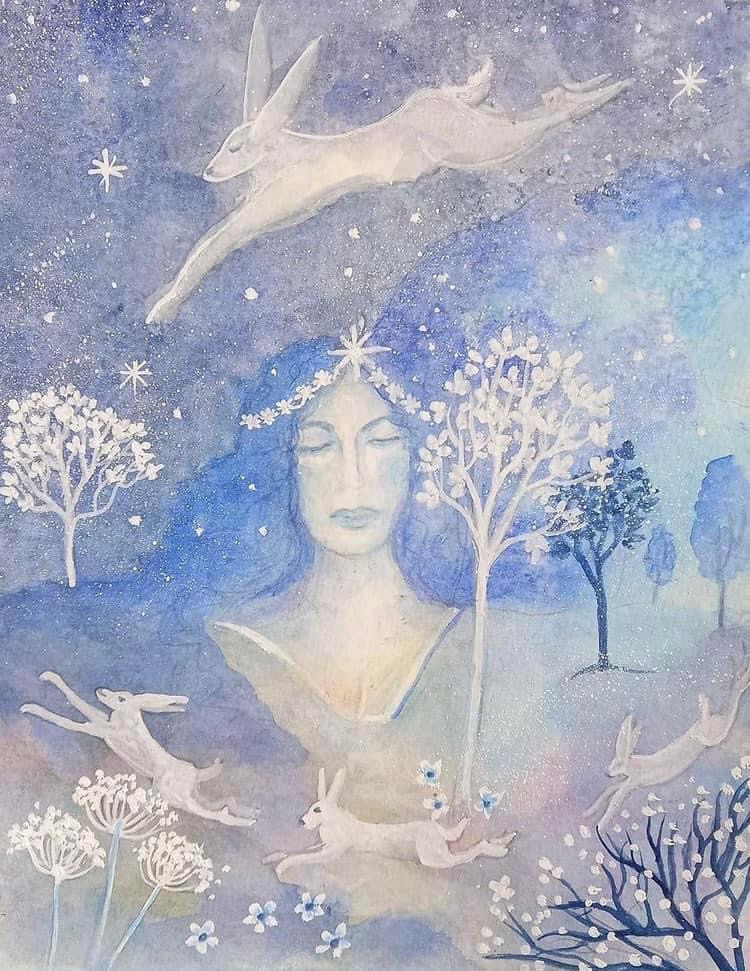
As we hold Easter egg hunts and gift those we love with bunny shaped candies this weekend, we are actually tapping into European rites of spring from pre-Christian times. The ancient Germanic Goddess Eostre (aka Ostara) embodied spring, the season of rebirth, renewal and new growth. Eostre’s symbology included fertile rabbits as well as the egg.
The sacred moon Goddess Ix Chel holds a similar place of honor in the Mayan culture. Like Eostre, Ix Chel is also associated with rabbits. She is shown below with her beloved consort rabbit.
Ix Chel has been worshipped throughout Mexico and many parts of Central and South America for thousands of years. It is said that Ix Chel is responsible for nourishing the crops by overturning her sacred womb jar so that the waters will flow through the world, nourishing new life.
“Goddess Ix Chel, known as the Maya[n] Goddess of the Moon, Water, Weaving and Childbirth… all having to do with cycles, tides, creating and bringing new life.
Her Rabbit consort/ child/sister/brother/mother/father/friend is the personification of new life and cleaving to bringing the young along, the gentle spirit, the shy, and yet the enduringly fertile/creative.
She is called the pale one…and is co-existant and interchangable with the moon and the moon’s cycles… she is a miracle maker, a healer, a teacher, a keeper of stories… and as she is also the moon also going dark for three days… Ix Chel suffering torment but comes ever back to full radiant reflective light again.
There are so many Ix Chels in the world, and so many Auroras and so many Jesu’s and so many Attis’ and so many of the great One who was taken down and then came back to life in triumph.
~Clarissa Pinkola Estes
It is amazing to me that people all over this Earth created similar stories and myths of rebirth and renewal to honor spring. We are truly one Tribe.
🐰

